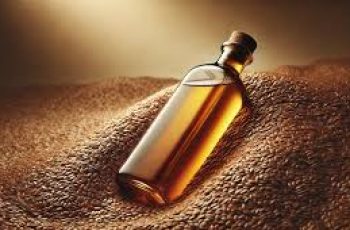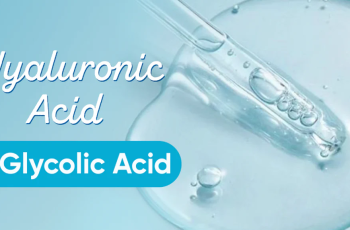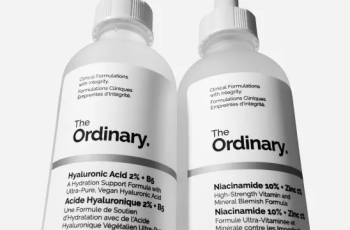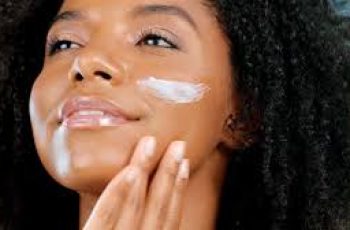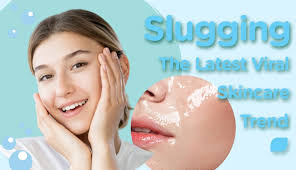
.webp)
.webp)
.webp)
How Does Skin Slugging Work?
.webp)
.webp)
Skin slugging is currently the hottest skincare trend blowing up across social media platforms, captivating beauty enthusiasts and skincare lovers everywhere.
.webp)
.webp)
.webp)
Many patients in my dermatology practice here in Miami have been asking if skin slugging truly delivers on its promises or if it’s just another fleeting fad.
.webp)
.webp)
The effectiveness of skin slugging really depends on what products you use and, most importantly, what your Baumann Skin Type® is, which determines your skin’s unique needs and sensitivities.
.webp)
.webp)
.webp)
After reading this guide, you will clearly understand what skin slugging is, whether it’s suitable for acne-prone or oily skin, and which products are safest and most effective to use for slugging.
.webp)
.webp)
I’ll also walk you through how to slug your skin using natural, clean products so you can avoid harmful chemicals often found in popular occlusive agents like petroleum jelly.
.webp)
.webp)
.webp)
Slugging isn’t a brand-new idea, though it may seem novel because of its trendy new name.
.webp)
.webp)
Dermatologists have been using a similar concept called occlusion or occluding the skin for decades to aid in healing wounds and enhancing skin barrier function.
.webp)
.webp)
.webp)
Occlusion in medicine means covering the skin in a way that blocks water evaporation and applies gentle pressure to improve absorption of topical treatments and speed healing.
.webp)
.webp)
Common occlusive methods include wrapping skin with plastic wrap (like Saran wrap) after applying medications or moisturizers, or using ointments like Vaseline or Aquaphor to lock in moisture.
.webp)
.webp)
.webp)
These techniques prevent moisture loss and create a protective barrier that encourages ingredients beneath to penetrate deeper and work more effectively overnight.
.webp)
.webp)
What Is Skin Slugging?
.webp)
.webp)
.webp)
On social media, skin slugging usually means applying a thick layer of Vaseline, Aquaphor, or another petroleum-based ointment on top of your nighttime skincare routine.
.webp)
.webp)
The term “slugging” itself is more of a trendy slang than a medical term, referring to the idea of pushing or “slugging” ingredients deep into your skin by sealing them in.
.webp)
.webp)
.webp)
When you slug, you essentially layer your active skincare treatments first, then apply a generous amount of an occlusive product like petroleum jelly to maximize absorption and hydration.
.webp)
.webp)
The word “slug” in this context is a playful way of saying you’re pressing skincare products firmly into your skin to enhance their effects overnight.
.webp)
.webp)
.webp)
How To Skin Slug
.webp)
.webp)
Skin slugging can greatly improve your skin’s hydration and repair—but only if you’re using the right products for your skin type.
.webp)
.webp)
.webp)
Here are the key steps you should follow to slug your skin effectively and safely:
.webp)
.webp)
Start by identifying your Baumann Skin Type® by taking a quick online quiz designed to analyze your skin’s moisture levels, oiliness, sensitivity, and other factors.
.webp)
.webp)
.webp)
This step is crucial because using the wrong products or slugging method for your skin type could cause breakouts, irritation, or worsen existing skin concerns.
.webp)
.webp)
Wash your face with warm water and a cleanser that suits your Baumann Skin Type to remove impurities and prime your skin to absorb treatments better.
.webp)
.webp)
.webp)
Whether you need a low pH cleanser, a gentle foaming wash, or a non-foaming formula depends entirely on your unique skin profile.
.webp)
.webp)
Apply the appropriate treatment product recommended for your skin, often called step 3 in your PM routine, which may include serums or creams targeting issues like pigmentation or aging.
.webp)
.webp)
.webp)
This treatment product is what you want to “push” into your skin with slugging, so selecting the right one is essential for results.
.webp)
.webp)
Follow with a skincare product containing occlusive ingredients to seal in all the goodness from previous layers.
.webp)
.webp)
.webp)
While TikTok and other social media often recommend Vaseline or Aquaphor, these are petroleum-based and not the best option for everyone due to potential pore-clogging and environmental concerns.
.webp)
.webp)
Instead, opt for a barrier repair moisturizer specially formulated to support your skin’s natural defenses without harmful petrochemicals.
.webp)
.webp)
.webp)
Finally, apply a soothing occlusive oil like organic Argan Oil to lock in moisture and add nourishing fatty acids to support skin health.
.webp)
.webp)
Leave everything on your skin for at least an hour or overnight to give the products time to absorb and work their magic.
.webp)
.webp)
.webp)
What Is The Best Skin Care Product To Slug The Skin?
.webp)
.webp)
For most skin types, slugging with harsh active ingredients like alpha-hydroxy acids, salicylic acid, or retinoids is not recommended because increased penetration can cause irritation and redness.
.webp)
.webp)
.webp)
Slugging enhances the depth that ingredients reach within your skin, so it’s safer and more effective to use natural or “clean” products that avoid irritating chemicals and toxins.
.webp)
.webp)
Good candidates for slugging are skin lightening serums, anti-aging creams, and soothing treatments that calm inflammation and promote repair.
.webp)
.webp)
.webp)
Our top product picks for safe and effective slugging include Zerafite Barrier Repair Moisturizer and PAORR 100% Organic Moroccan Argan Oil, both rich in skin-loving ingredients.
.webp)
.webp)
Slugging With Vaseline or Aquaphor
.webp)
.webp)
.webp)
Many patients ask me, “Which is better for slugging: Vaseline or Aquaphor?” As a dermatologist and environmental advocate, I say neither is ideal.
.webp)
.webp)
Vaseline consists of petrolatum, a by-product of crude oil, which raises concerns about its safety and environmental footprint.
.webp)
Aquaphor also contains petrolatum and mineral oil, another crude oil derivative, which some people prefer to avoid on their skin for health and ethical reasons.
Personally, I would rather not apply products derived from petroleum all over my face when safer, natural occlusive alternatives exist that nourish and protect the skin without petrochemical exposure.
Slugging With Natural Oils
Natural oils are wonderful occlusive alternatives to petroleum-based products for slugging, especially when used on top of a barrier repair moisturizer.
Choosing the right oil depends on your Baumann Skin Type because different oils contain varying fatty acids beneficial for different skin concerns.
For example, Argan Oil is an excellent choice for skin that is dehydrated or inflamed because it contains fatty acids like oleic acid (which boosts ingredient penetration), linoleic acid (which reduces inflammation), and hydrating palmitic and stearic acids.
However, some fatty acids in oils may interfere with treatments for dark spots or hyperpigmentation, so it’s critical to know your skin type before slugging with natural oils.
Avoid essential oils for slugging because they lack the necessary fatty acids and can irritate the skin.
Instead, pick extra virgin or first-press organic oils such as PAORR Organic Argan Oil for the best benefits without harsh additives.
Best Products For Skin Slugging By Skin Type
Slugging For Dry Skin:
Use products rich in stearic acid like Argan or Borage oil, combined with a barrier repair moisturizer to deeply hydrate and restore very dry, flaky skin.
Slugging For Sensitive Skin:
Sensitive skin varies, including acne-prone, rosacea-prone, stinging, or allergic types, so choose oils with anti-inflammatory linoleic acid to calm and soothe your specific sensitivity.
Slugging For Acne-Prone Skin:
Slugging can backfire if you’re on acne medications because enhanced penetration may cause irritation or worsen acne.
If you’re acne-prone but not medicated, make sure to wash thoroughly (double cleansing if wearing makeup), skip irritating actives like benzoyl peroxide and retinol, and choose non-comedogenic oils to avoid clogged pores.
Avoid comedogenic ingredients like coconut oil, which may increase breakouts.
Slugging For Rosacea-Prone Skin:
Slugging is great for calming red, inflamed rosacea skin.
Use a gentle, soothing cleanser, follow with a toner containing calming ingredients like Coenzyme Q10, then apply a barrier repair moisturizer like Zerafite Soothing and Calming Cream, finishing with antioxidant-rich argan oil.
Slugging For Oily Skin:
Oily skin naturally produces enough sebum to aid ingredient absorption, so slugging isn’t necessary and may feel heavy.
If you want to slug, cleanse with a salicylic acid cleanser (double cleanse if makeup or sunscreen is used), apply your targeted product based on your skin type, then layer with a hyaluronic acid serum, barrier repair cream, and a light oil like argan oil.
How Often Should You Slug Your Face?
For dry skin types, slugging every night can dramatically improve hydration and barrier repair, as long as you follow a routine tailored to your skin’s needs after removing slugging products.
If you have oily skin, slugging once a week is usually sufficient to avoid overwhelming your skin’s natural oil balance.
Remember, slugging boosts the penetration of skincare products but cannot replace a proper, consistent daily skincare regimen tailored to your unique skin type.
Start by taking the Baumann Skin Type® quiz to get personalized recommendations, especially for step 3 in your PM routine, which is the product you want to slug for maximum benefit.
To learn more about skin slugging and get customized skincare advice, follow us on social media @SkinTypeSolutions or explore our extensive dermatology-written library online.
